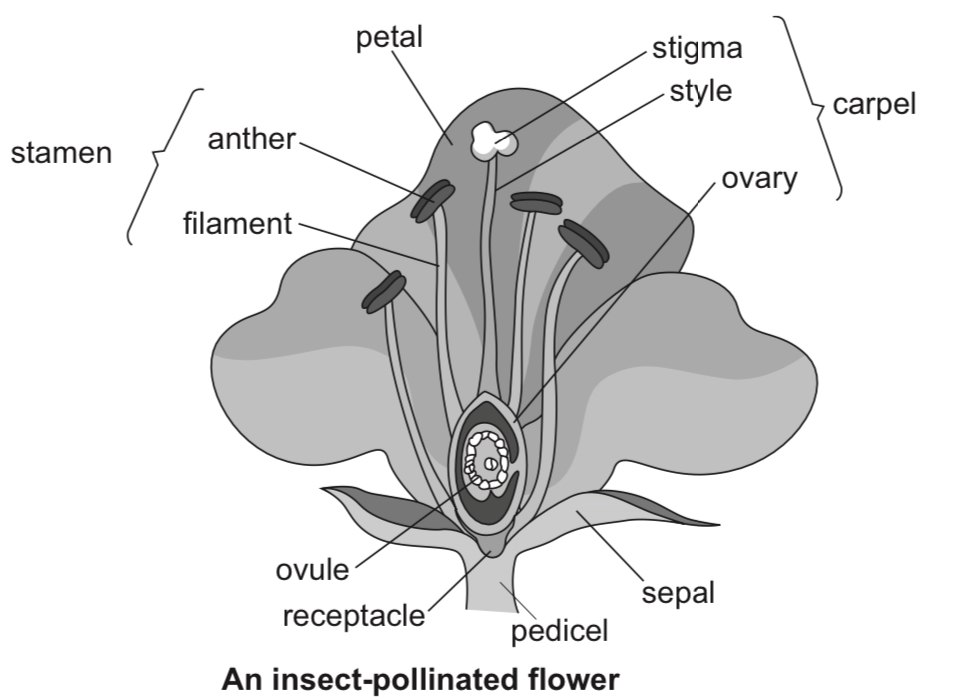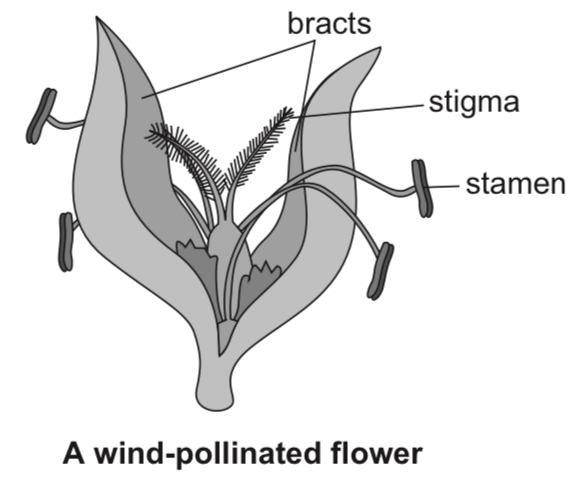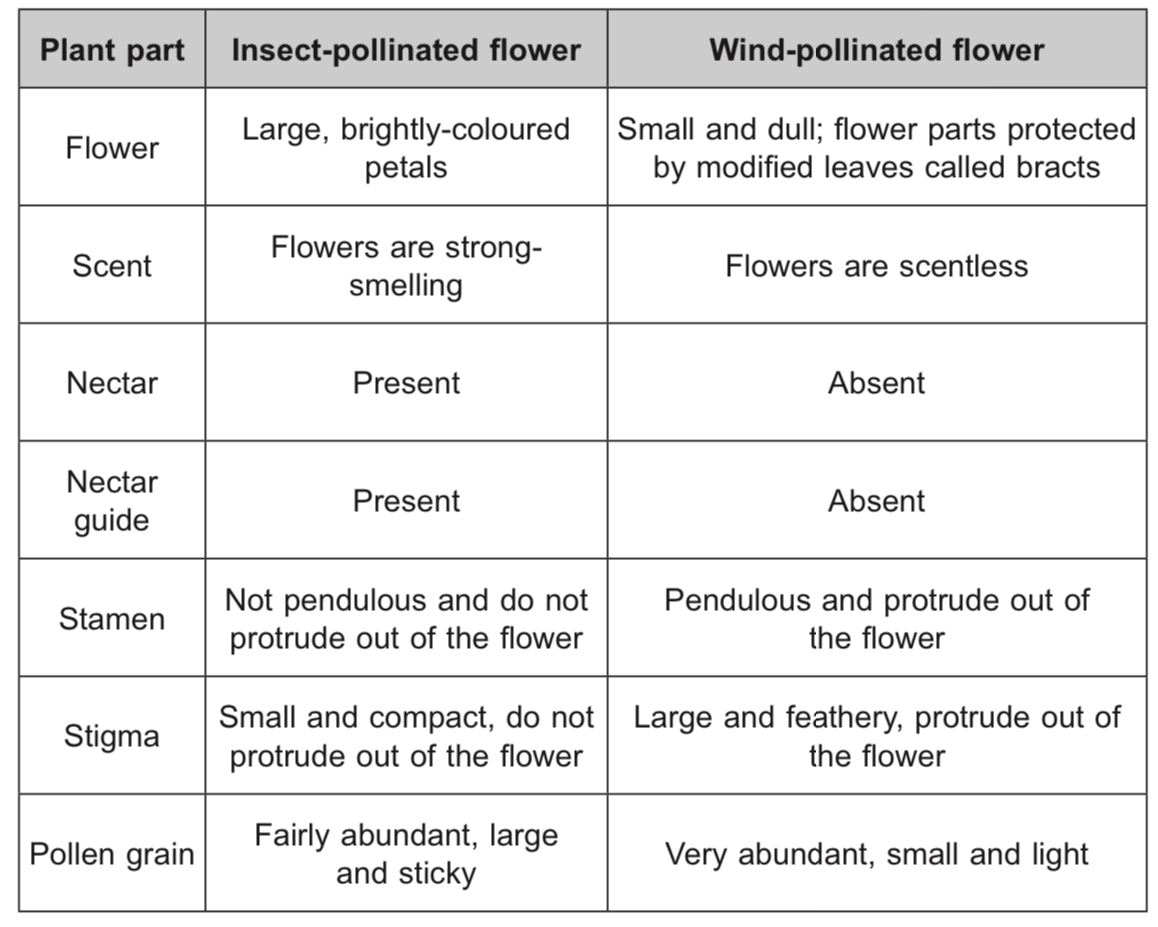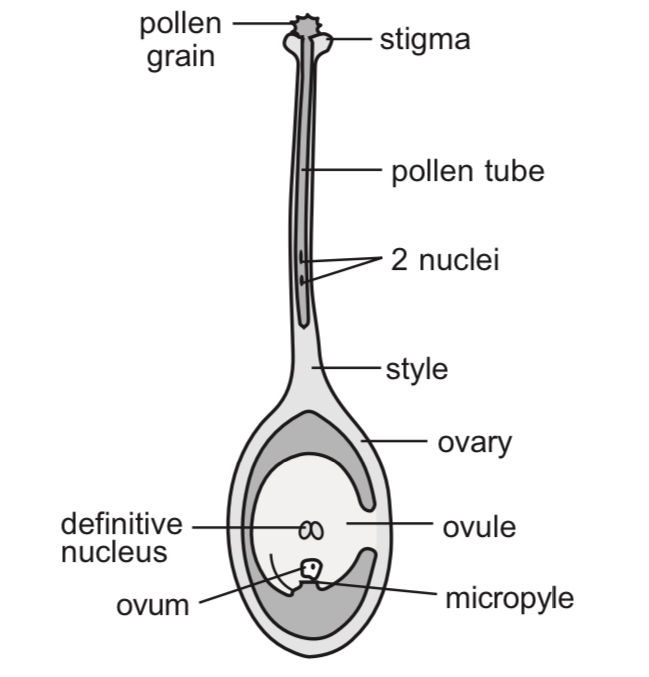Chapter 20 - Reproduction in Plants
Introduction
%%Reproduction%% is the biological process by which new organisms are produced to ensure the %%perpetuation%% of the species.
Reproductive methods are grouped into two main groups: %%asexual reproduction%% and %%sexual reproduction%%.
Asexual reproduction is when an organism produces a %%genetically identical offspring%% without the contribution of genetic material from another organism.
Sexual reproduction is when a genetically dissimilar offspring is produced through the %%fusion%% of two %%gametes%%, one from each parent organism, during the process of fertilisation.
Gametes are reproductive cells that contain half the number of chromosomes as a normal body cell.
The zygote produced during fertilisation contains genetic material from both parents, and is therefore genetically different from them.


Difference between wind and insect pollinated flowers:

Pollination
- %%Pollination%% is the transfer of pollen grains from the anther to the stigma, enabling fertilisation.
- Mechanisms of pollination include insect pollination and wind pollination.
- %%Insect-pollinated flowers%% contain nectar and have nectar guides which are lines that are visible to insects, guiding them to the location of the %%nectar%%.
- When the insect enters the flower, %%pollen grains%% from the anthers stick onto the insect. If pollen grains from a previously-visited flower are present on the insect, they will be transferred to the sticky %%stigma%%.
- %%Wind-pollinated flowers%% have their pollen carried away by the wind when the exposed %%anthers%% shake in the wind.
- When the pollen grains come into contact with the large feathery stigmas of another flower, they would be trapped.
- There are two types of pollination: %%self-pollination%% and %%cross-pollination%%.
Self-pollination
%%Self-pollination%% is the transfer of pollen grains from the anther to the stigma of the same flower, or from the anther of a flower to the stigma of another flower on the same plant.
Factors that promote self-pollination are:
(a) %%Bisexual flowers%% with anthers and stigma maturing at the same time.
(b) Stigma being located directly below the anthers, allowing %%pollen grains%% to fall onto it.
Advantages of self-pollination are:
(a) Not dependent on external agents of pollination such as %%insects%% or %%wind.%%(b) Less wastage of pollen and energy. During wind and insect pollination, a great number of pollen grains are lost as only a few pollen grains come into contact with a stigma of a flower of the same species.
(c) Only %%one parent%% plant is required.
A disadvantage of self-pollination is %%less genetic variation%%, hence the offspring is %%less adapted%% to environmental changes.
Cross-pollination
%%Cross-pollination%% is the transfer of pollen grains from the anther of a flower to the stigma of a flower of another plant belonging to the same species.
Factors that promote cross-pollination are:
(a) Plants bearing only male or female flowers. These plants are called %%dioecious plants%%.
(b) In plants with bisexual flowers, the anthers and the stigmas mature at different times.
(c) %%Self-incompatibility%% – When a pollen grain of a flower happens to land on the stigma of the same flower or another flower on the same plant, a %%biochemical%% block prevents the pollen grain from %%germinating%%.Advantages of cross-pollination are:
(a) Greater %%genetic variation%%, hence the offspring has a higher chance of surviving environmental changes.
(b) Offspring may have inherited beneficial qualities from both parents.Disadvantages of cross-pollination are:
(a) Energy-consuming – lots of energy is required to make large amounts of pollen grains.
(b) A great number of pollen grains are wasted due to the randomness of the %%dispersal%% methods.
(c) External agents of pollination i.e. wind, insects are required.(d) Two parent plants are required.
Double fertilization in plants:

- After pollination, a pollen tube grows out of each pollen grain in response to the %%sugary fluid%% secreted by the stigma.
- The cytoplasm and the two nuclei of the pollen grain (generative nucleus and pollen ‘tube nucleus) pass into the pollen tube. The pollen tube nucleus controls the growth of the %%pollen tube.%%
- The pollen tube grows through the cells of the style by secreting %%enzymes%% to %%digest%% them.
- The generative %%nucleus divides %%to form two male gametes.
- The pollen tube enters the ovary and then enters the ovule through an opening in the ovule wall called a %%micropyle%% and releases the two male gametes.
- One male gamete fuses with the ovum to form the %%zygote%%. The other male gamete fuses with the definitive nucleus to form the %%endosperm nucleus%%.
- The zygote will divide and develop into the %%embryo%%. The endosperm nucleus will divide and give rise to the endosperm, a food storage tissue that will nourish the developing embryo.
- The %%ovule%% will develop into a %%seed%% and the %%ovary%% will develop into a %%fruit%%.